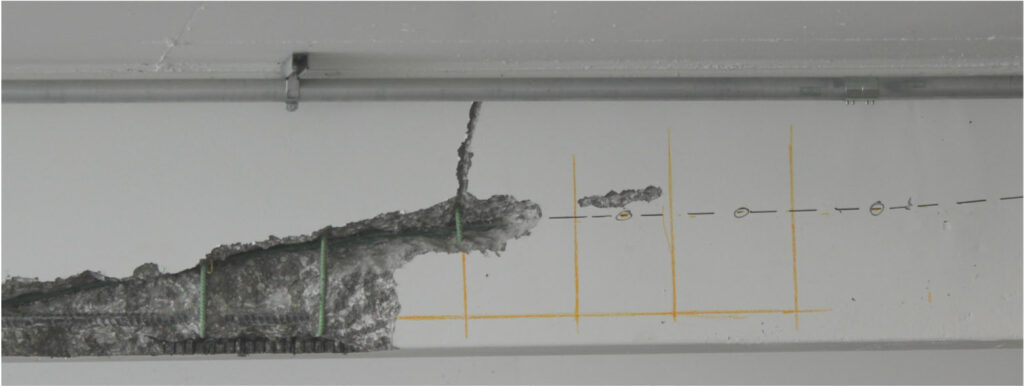RainierGPR Service Areas: Comprehensive Coverage for Concrete Scanning
RainierGPR Service Areas: Comprehensive Coverage for Concrete Scanning
Blog Article
Concrete Scanning: An Important Action Towards Ensuring Structural Stability and Safety And Security
In the world of building and facilities upkeep, the significance of concrete scanning can not be overemphasized. This meticulous procedure holds the crucial to revealing potential threats concealed under the surface of seemingly strong structures. By utilizing innovative technology and methodologies, concrete scanning functions as a critical device in ensuring that the honesty and safety and security of buildings and bridges are upheld to the highest requirements. However, past its surface-level effects, the duty of concrete scanning extends far much deeper than meets the eye.
Significance of Concrete Scanning
Concrete scanning plays a crucial duty in guaranteeing the structural integrity and safety of buildings and infrastructure jobs. By using sophisticated innovations such as ground-penetrating radar (GPR) and electro-magnetic induction, experts can non-destructively examine concrete frameworks to spot prospective problems, gaps, embedded things, and support format. This process enables very early discovery of anomalies that can endanger the stability of a structure, stopping expensive damages and guaranteeing the security of passengers.
Before drilling, cutting, or coring right into concrete, scanning assists determine the exact locations of rebar, post-tension cable televisions, and other ingrained components, decreasing the danger of unintended hits that might lead to architectural weaknesses. Additionally, concrete scanning help in quality control by confirming the thickness of concrete covers and finding any type of inconsistencies that might affect the general durability of the framework.
Innovation for Concrete Inspection

Advantages of Early Discovery
Timely discovery of architectural issues can dramatically reduce threats and guarantee the longevity of building and construction jobs. By determining possible issues early on in the construction process, stakeholders can take aggressive steps to deal with problems prior to they intensify into bigger and more pricey issues. One of the vital benefits of very early discovery is the avoidance of architectural failures, which can present major safety hazards and result in project delays and economic losses.
Furthermore, very early detection allows for timely fixings and upkeep, which can aid expand the life-span of the framework. By resolving issues quickly, building and construction teams can prevent pricey fixings and even the requirement for premature replacement of structural components. This aggressive method not only saves money and time but also boosts the overall security and resilience of the building and construction project.
In addition, early detection can boost project planning and decision-making by giving stakeholders with valuable understandings into the problem of the framework. Equipped with this details, project managers can make educated choices pertaining to building and construction methods, timelines, and materials, leading to a lot more successful and efficient project results.
Making Certain Architectural Security
Making certain the architectural stability of a building and construction task is vital to its safety and long life. Concrete scanning plays a critical role in making sure architectural security by identifying possible concerns such as voids, delamination, or support corrosion that can visite site endanger the stability of the framework over time.
By using sophisticated scanning modern technologies like ground-penetrating radar (GPR) and electro-magnetic induction, building experts can non-invasively examine concrete frameworks to identify areas of problem beneath the surface area. This aggressive approach permits for the early detection of issues or weak points, making it possible for prompt repair work or support to avoid architectural failings.
Normal concrete scanning during different construction phases and throughout the life process of a structure can assist keep its stability, minimize dangers, and guarantee the safety of occupants. By focusing on structural security through concrete scanning, building and construction projects can boost their resilience and resilience, ultimately adding to greater security and long life.
Preventing Important Failures
To protect versus catastrophic events, careful surveillance and aggressive maintenance are important in avoiding essential failings within architectural structures. Spotting possible concerns before they intensify is essential to stop structural failures. Executing regular assessments, such as concrete scanning, can expose concealed issues like spaces, cracks, or deterioration that can compromise the integrity of a framework. By utilizing sophisticated scanning modern technologies like Ground Passing through Radar (GPR) or Concrete X-ray, designers can non-destructively evaluate the problem of concrete and determine powerlessness that need reinforcement or repair work - RainierGPR Service Areas.

Verdict
Finally, concrete scanning plays an important role in guaranteeing structural stability and safety and security by using advanced innovation for early discovery of potential problems. This positive technique aids stop critical failings and guarantees the security of frameworks. It is pop over here vital to prioritize concrete assessment as a conventional practice to protect the longevity and security of buildings and facilities.
Concrete scanning plays a vital role in guaranteeing the structural honesty and security of structures and infrastructure tasks. Additionally, concrete scanning aids in quality control by validating the thickness of concrete covers and finding any kind of discrepancies that may affect the overall longevity of the framework. Concrete scanning plays a critical duty in making certain structural stability by discovering possible concerns such as gaps, delamination, or reinforcement deterioration that could endanger the integrity of the framework over time.

In conclusion, concrete scanning plays an important duty in guaranteeing architectural honesty and safety by utilizing sophisticated innovation for very early detection of potential concerns.
Report this page